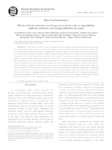Use este identificador para citar ou linkar para este item:
http://www.alice.cnptia.embrapa.br/alice/handle/doc/1062312Registro completo de metadados
| Campo DC | Valor | Idioma |
|---|---|---|
| dc.contributor.author | LIMA, A. R. C. | pt_BR |
| dc.contributor.author | FERNANDES, M. H. M. R. | pt_BR |
| dc.contributor.author | TEIXEIRA, I. A. M. A. | pt_BR |
| dc.contributor.author | FRIGHETTO, R. T. S. | pt_BR |
| dc.contributor.author | BOMPADRE, T. F. V. | pt_BR |
| dc.contributor.author | BIAGIOLI, B. | pt_BR |
| dc.contributor.author | MEISTER, N. C. | pt_BR |
| dc.contributor.author | RESENDE, K. T. de | pt_BR |
| dc.date.accessioned | 2017-01-31T11:11:11Z | pt_BR |
| dc.date.available | 2017-01-31T11:11:11Z | pt_BR |
| dc.date.created | 2017-01-31 | pt_BR |
| dc.date.issued | 2016 | pt_BR |
| dc.identifier.citation | Revista Brasileira de Zootecnia, Viçosa, v. 45, n. 12, p. 781-787, 2016. | pt_BR |
| dc.identifier.uri | http://www.alice.cnptia.embrapa.br/alice/handle/doc/1062312 | pt_BR |
| dc.description | This study was carried out to to evaluate how feed restriction and different forage:concentrate ratios affect digestibility, methane emission (using the SF6 technique), and energy utilization of Anglo-Nubian goats. Fifteen (15) dry and non-pregnant Anglo Nubian goats, averaging 30±2.9 kg body weight, were used. The experiment was divided into two trials, the first of which was designed to study the effects of feed restriction (0% or ad libitum; 15% of feed restriction or equivalent to 85% of ad libitum intake; and 40% of feed restriction or equivalent to 60% of ad libitum intake) and the second, to study the effects of forage:concentrate (F:C) ratios (75:25, 54:46, and 25:75) in the diet. The sulfur hexafluoride (SF6) tracer gas method was used to collect and estimate methane (CH4) emissions. Feed restriction level did not affect apparent total tract digestibility of dry matter (DM), organic matter, crude protein, and neutral detergent fiber. Methane emission (g d?1) decreased linearly as intake level decreased. However, energy loss in methane proportional to organic matter intake was similar among levels of feed restriction; consequently, dietary metabolizability did not differ among treatments. Methane gas (g d?1) as a function of F:C ratio revealed a quadratic response, showing the highest values when animals were fed the 46:54 F:C ratio diet (18.2 g d?1), suggesting that the decrease in absolute CH4 occurred when the level of concentrate inclusion in the diet surpassed approximately 50%. The results presented herein may be relevant for the ongoing and future efforts towards completion of an IPCC inventory regarding the contribution of goats to the greenhouse gas effects on the planet. | pt_BR |
| dc.language.iso | eng | eng |
| dc.rights | openAccess | eng |
| dc.subject | Emissão de gases | pt_BR |
| dc.subject | SF6 | pt_BR |
| dc.subject | Gass emissions | pt_BR |
| dc.title | Effects of feed restriction and forage: concentrate ratio on digestibility, methane emission, and energy utilization by goats. | pt_BR |
| dc.type | Artigo de periódico | pt_BR |
| dc.date.updated | 2017-07-20T11:11:11Z | pt_BR |
| dc.subject.thesagro | Cabra | pt_BR |
| dc.subject.thesagro | Nutrição animal | pt_BR |
| dc.subject.thesagro | Metano | pt_BR |
| dc.subject.thesagro | Efeito estufa | pt_BR |
| dc.subject.nalthesaurus | Goats | pt_BR |
| dc.subject.nalthesaurus | Animal nutrition | pt_BR |
| dc.subject.nalthesaurus | Restricted feeding | pt_BR |
| dc.subject.nalthesaurus | Greenhouse gases | pt_BR |
| dc.subject.nalthesaurus | Ruminants | pt_BR |
| riaa.ainfo.id | 1062312 | pt_BR |
| riaa.ainfo.lastupdate | 2017-07-20 | pt_BR |
| dc.identifier.doi | http://dx.doi.org/10.1590/s1806-92902016001200008 | pt_BR |
| dc.contributor.institution | ANA REBECA CASTRO LIMA, FCAV-UNESP; MARCIA HELENA MACHADO DA ROCHA FERNANDES, FCAV-UNESP; IZABELLE AUXILIADORA MOLINA DE ALMEIDA TEIXEIRA, FCAV-UNESP; ROSA TOYOKO SHIRAISHI FRIGHETTO, CNPMA; THIAGO FRANCISCO VENTOSO BOMPADRE, FCAV-UNESP; BRUNO BIAGIOLI, FCAV-UNESP; NAOMI CRISTINA MEISTER, FCAV-UNESP; KLEBER TOMAS DE RESENDE, FCAV-UNESP. | pt_BR |
| Aparece nas coleções: | Nota Técnica/Nota científica (CNPMA)  | |
Arquivos associados a este item:
| Arquivo | Descrição | Tamanho | Formato | |
|---|---|---|---|---|
| 2016NT01.pdf | 284,65 kB | Adobe PDF |  Visualizar/Abrir |









